Hotel rakes: what you need to know in advance if you are doing a conference room
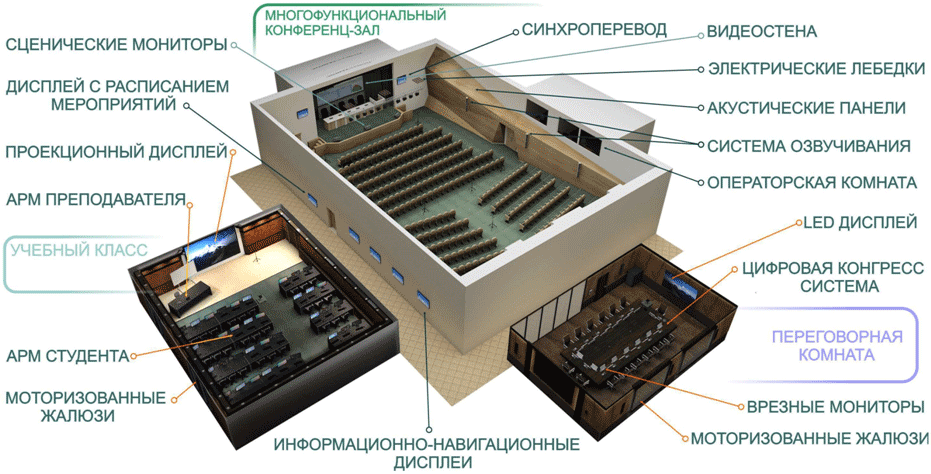
Doctors often complain that patients always pull to the last, before they come to the reception. We have about the same situation: multimedia equipment is usually set aside at the very end of the renovation of the floor with a conference room or at the end of construction. The usual picture of the connection is when an architectural project has been completed, the engineer is set, everything is ready.
And then it turns out that the designer thought up to do everything in glass and marble, and you need to put special sound-absorbing panels (or very expensive speaker arrays). On the sunny side panoramic windows? Hi, the projector is worth its weight in gold or an expensive shading system. Weak-workers-designers laid only one cable channel? Fine, we will make marble or hang “snot” in the hall. Calculated ventilation "butt"? Hi, heat dissipation equipment.
')
And the budget at the hotel or hotel - the most painful. And so it can be greatly reduced, if you start the project a little in advance.
Short introduction
I am engaged in dubbing various objects. My colleague already wrote about the temple and the Spartak stadium . In general, such work by the standards of our team is almost space. More often we work not where we need to calculate an unusual sound, but in hotels and hotels, where in the minimum budget you need to get comfortable conditions for people. More precisely - think over the most rapid payback of the hall for the owner of the hotel.
The general situation is this - sooner or later the hotel understands what to do at the conference area. This is usually a floor with a large hall where conferences, trainings, seminars, negotiations are held, less often - buffets, concerts, lectures and so on. Even weddings.
Usually the situation looks like this: for example, in one of the hotels where we worked, there was billiards and bowling on the floor. They did a good repair and turned the floor into a conference area. The public changed to a business audience, the occupancy rate of the rooms increased, the hotel began to earn more, and every week they began to organize large events. Plus, the zone itself provided an opportunity for new earnings - regular seminars, trainings and something else are now held there.
On that project, we came to the stage when it was still possible to drive balls in billiards, so almost everything was done economically correctly. Usually they turn much later, and what could have been solved at the design stage with the designer or architect, or later, when finished, is decided by expensive equipment or additional work.
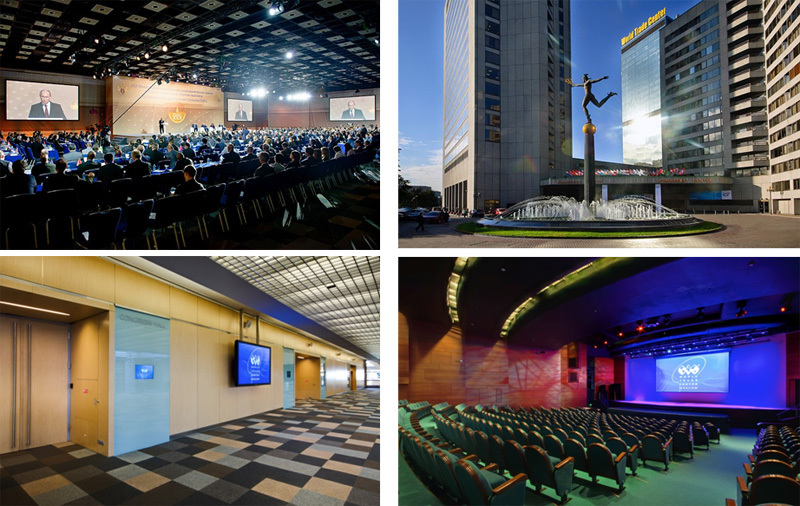
WTC
TK. First you need to understand very clearly what the hall is for. If seminars are one set of requirements, and if suddenly performances of artists are planned or balrum is another. The money in HoReCa are carefully and tenderly, every ruble is an extra time to payback, therefore, most of all saved on the right TZ.
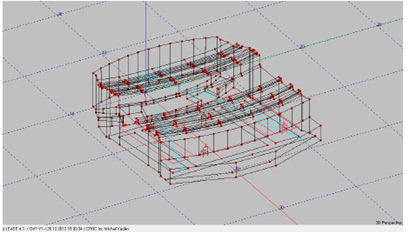
Acoustic model - EASE and Bose Modeler
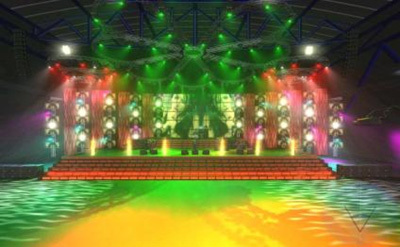
Lighting model - Dialux and LightConverse
The main factor is speech intelligibility. It depends on what materials were used (by 95%) and how the seating will be (to a lesser extent). When capital modernization is better to think about it immediately.
Rake
Partitions . In most cases, a place requiring multimedia equipment is a large hall with the possibility of free placement of furniture. Most often, soundproofing walls are designed immediately, which allow to divide it into several parts. This is important for conferences with different simultaneous presentations, different small events (business breakfast in one part, lecture in another). So, soundproof walls are usually calculated correctly and well, but they forget about the raised floor and suspended ceiling. The fact is that the sound “calmly” pierces the ceiling tile, passes in the sub-ceiling space into the next room and there it is already well heard. Correctly do soundproofing shields so that they do not interfere with ventilation, but do not let the sound through. Of course, we need to think about this before putting the hall into operation. It is important to consider the distribution: we had cases when we came to ask to remove the audibility in the rooms above the hall. During the events they heard everything that the speaker said. Vacationers complained.
Weak workers and sound . The general contractor rarely gives his work “to the side” - as a rule, if he has a team of weak work, then even large halls are entrusted to them. But real experience and theory are two different things. In the simple case, weak slavers simply incorrectly configure the hall, in the more complex - they really know the theory, consider everything correctly, but they face undocumented functions of the equipment, which in my memory have often resulted in serious costs. The most common mistake is a long HDMI cable, 10-25 meters. On tests, it works great, but it is worth bringing a laptop and trying to connect to the projector, as it turns out that its video card drives a weaker signal, which simply does not finish on this route. We were even called during events with a request to fix something urgently. Then we brought the equipment, but after that we had to pull out a $ 500 cable from the corrugations and put a new route. Well, there were no stroking.
Warmly A good bright projector can easily allocate 1.5 kW (and there may be several such projectors in the hall), active acoustics with a built-in amplifier also emit a lot of heat. They came to us with a project with a consumption of 30 kW and a heat release of about 20 kW (there were still rotating light heads). And the air conditioning was calculated exactly “penny to penny” for the maximum occupancy of the hall. People were recruited, the iron turned on - and an hour later it was simply impossible to be in the hall.
Switch . When in the hall you need to change the configuration between events, you need to think about how it will be done. If a lot of things to mount-dismantle - you can not meet the hour. If you simply press the five buttons and everything starts to work by itself, you can put events one after the other, it is profitable. A very handy thing is motorized projection screens for projectors embedded in the ceiling, and elevators for projectors. These devices allow you to instantly switch from conference to banquet format. Of course, they are useless without a centralized control system, by means of which an operator with a wireless control panel in his hands (in the budget version implemented, including on the iPad) can change the configuration of the premises on the fly and adjust the parameters (sound volume, equalization, brightness lighting, etc.).
Network The rake of all IT professionals "from the outside" - we arrive at the site, asking where our 20 ports are on the switch. The caretaker looks at the documents, looks at us, again at the documents and then says that he has not provided for such things. But this is the most neglected case. More often it happens a little differently: the project company counted 3-4 ports, but in fact it is necessary two times more by three halls in case of separation by partitions. Then there are two problems - the purchase in two stages (and you could get a discount when ordering at the same time) and problems with food.
Power . Iron consumes a lot of electricity. If you do not know how much, much in advance, you may have to degrade the characteristics of the equipment, because you need to somehow fit into the available capacity. Another sore point of power supply is grounding. There were cases when the equipment began to fail along the control circuit. Measurements of power quality yielded nothing, the voltage and frequency of the network were normal, but when they measured the potential difference on the “ground” between the equipment in the hall and the rack, they intended to 11 V, and periodically up to 15V. As a result, the operating organization was recommended to organize a potential equalization system.
Light One of our “favorite” problems is when the designer chooses the light of such a temperature (based on his preferences), that with normal video conferencing needed for major events and negotiations, colors are distorted. VCS requires a certain rather narrow plug of color temperatures for comfortable work (so that everyone in the channel has approximately the same color), and the designer may not be aware of this use of the room.
Chandeliers . In such halls sometimes hang very large chandeliers. In practice, this means that the projector can be lowered very low for working with a large screen — or an expensive lens is needed so that you can fit around the screen. We had a case where the customer moved one of the chandeliers, because it overlapped the view. A similar problem - with a transformable hall, the partition is too close to the screen, you need to think about where the projector will be.
There is a factor of incompatibility of equipment - many examples when one equipment with another works incorrectly. There are nuances with the pinout of connectors: if you don’t know in advance, there will be a lot of problems with commissioning. The experience of installations, the experience of constant visits to exhibitions, the annual certification of leading vendors - these are the things that greatly help to avoid unnecessary delays and budget increases.
Plus, of course, problems with incorrect operation are added, especially at the start-up stage of the facility - for example, the control system, despite the fact that it is made as concise and user-friendly as possible, is still quite a complicated thing and the user can accidentally jam the microphone. And then he calls us with a complaint that the sound reinforcement system does not work. Or another example - a technician from one of the conference rooms calls and says that the projector does not work, does not show anything. It turned out that for some reason they gave out to the tenants of the hall a remote control from the projector, and they pressed the video-video button, by chance, of course.
The specifics of the modernization of hotels
When the hall is old, they often try to “pull out” it with minimal forces, replacing, for example, only an old projector. It is entrusted to those who are engaged in finishing, so then surprises happen. Most often, when the hall is ready, it turns out that new equipment is needed, new equipment needs new commutation, which means shifting all the tracks, changing the power scheme, and so on in increasing order.
Many hotels have their own standards, which are set by the network. Each owner of a particular building solves two problems at once: 1) to meet the standard, 2) in no case do not exceed it, because it will be more expensive. And in the standard there could be something like: “There should be a projector, an LCD screen, a microphone in each hall”. Naturally, the switching system is not registered, there are no requirements for sound amplification, there is no minimum set of control equipment. In the United States or Europe, it goes without saying that no one will make a mixing console in the next room without a window in the hall, and here we have it - please. Or the light can be controlled from one place, the sound from the opposite end of the floor, and the curtain system for each window. Usually they simply set the task: a projector, a microphone and for it to work. Flexible switching - no. A little bit with the new event - and the customer calls the distributors, because they can not change the configuration of the equipment. For example, recently I regularly see that there is a VGA in the hall, and either a speaker from the iPad comes to the event, or you need to show a video from the presentation to the presentation, but there is no place to stick. Or you need to connect the video conferencing system for 5 minutes, and also nowhere. The hotel loses money, pays rentals for temporary installations, although at the project stage it would all be decided not very expensive.
Management - only those who have already understood why it is needed, put automatics or script schemes. The fact is that in this situation, not an IT specialist is a shaman, not an engineer runs along the cable, but the hall manager simply presses one of the 10 signed buttons. And all is well.
Good practice
For many organizers of responsible events it is very convenient to make automatic systems. It looks like this: an SMS with time is thrown off the robot, or time is clogged via the web interface. In the morning the system turns on, carries out self-diagnostics, reports by mail and SMS. 20 minutes before the event turns on, warms up. From time to time it turns on itself when a long time is simple - it checks the resource. If, for example, there is a month left before the lamp is changed, it reports this so that the admin can buy and replace. We recently put solutions that tie the work of conference rooms to accounting systems or Outlook - as a meeting is created, a room robot is added there. The equipment itself will turn on and set up, send a letter. Diagnosed in the morning. At the end of the year will send the admin full statistics on the use and download forecast for the next year.

About automation - in public areas of hotels it is often necessary to have different lighting scenarios (morning, evening, foggy-clear, wedding-conference, etc.), under them light and music. If you do not - at first, the staff itself switches the presets, and then forgets about them. Correct use of motion sensors and lighting - it saves energy, comfort is higher. You can control your hands, but if you don’t touch anything for a long time, you should again turn on the automation.
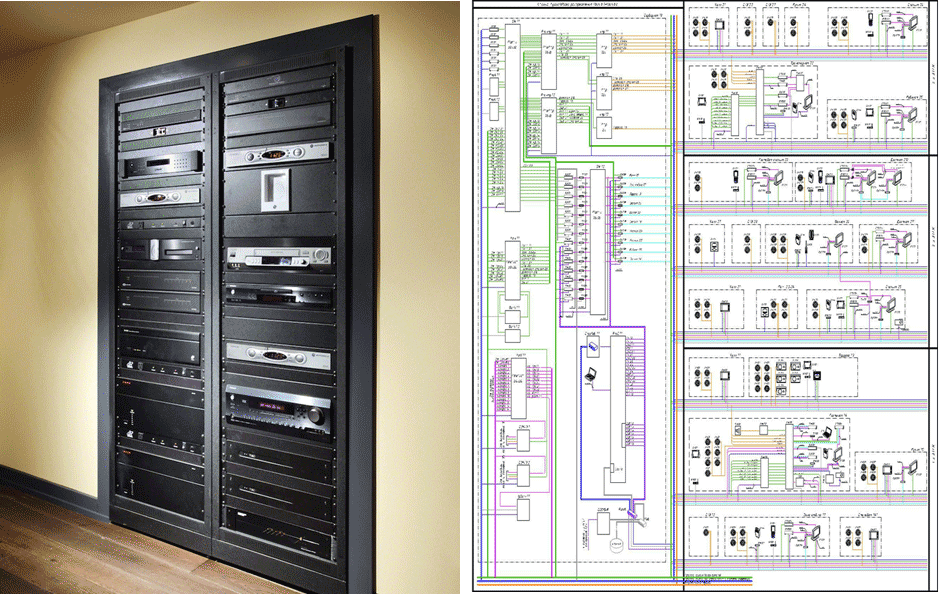
Sophisticated controller with automatics
Recently, the issue of background voice is very important. For expensive hotels, this system is usually divided with an emergency alert, or the speakers are of high quality. And where they save - the sound is ugly, or with two cheap separated systems, the voice acting does not shut up when there is an alarm. It is necessary to manually turn off.
In bars and other areas it is very important to put a good sound. Moreover, such that the table is cut off from each other by sound, but it does not interfere with speech at the table. This is decided by the equipment a bit more expensive than the standard one - you can pay attention to the acoustics in your favorite restaurants where such things occur - very noticeably.
Many put the alert system and content management on the screens. You need to notify people about the bar on the 11th floor, a disco in the basement, congratulate the staff, advertise your neighbors. The most telling example was 4 displays per block in one hotel. The first is navigation (where and what, including at conferences), the second is outdoor advertising (the restaurant across the road and the local travel agency paid for it, giving a discount to hotel guests), an informational block for its guests (“the dish of the day - halibut”) then events. All this was done for the sake of happy hours in the bar from 17:00 to 18:00 - the bar was empty at that time, and began to fill up thanks to the screens. Well, plus additional profits.
Here is an example of background sound:
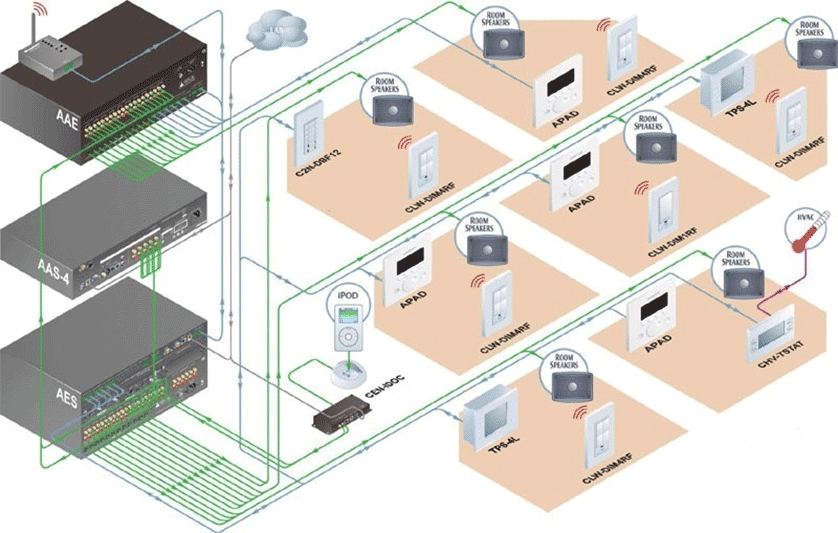

It is very bad to work when one company designs, mounts another, and the third one adjusts in general. Someone should be responsible for the result and conduct designer supervision.
Example 1: Hampton by Hilton - business hotel in Volgograd

Mobile soundproof walls allow you to divide the hall into small conference areas. For high-grade and comfortable work, high-speed Internet has been conducted, intuitively understandable control systems for wall multimedia have been installed. Audio and video systems independently adapt to the mode of multimedia panels. You can change the hardware settings using the iPad. Projection systems based on fixed screens AVStumpfl and NEC projectors; Enova AMX switching; LED panels and monitors NEC; Polycom video conferencing; AMX control; system of the main and architectural lighting based on LED-modules; Lutron lighting control system; JBL fixed conference sound system; JBL mobile concert sound system, Soundcraft Si Expression mixing console; BSS London Architect Central Audio Switch; Bose background sound system; Showtec concert lighting equipment system. Digital Signage AM X Software

Example 2: Korston Hotel Moscow on Sparrow Hills

Flexible control of light and sound. Scenario management is automated: just select the desired type of event, and the system automatically adjusts the light. For the concert, LED lamps and halogen spotlights are turned on, the spotlights are sent to the stage from four different points. Incandescent lamps embedded in the ceiling are used for a seminar or conference; this ensures uniform illumination of the hall. All concert equipment is placed under the ceiling on electric winches for easy installation of additional equipment and convenient maintenance.
Example 3: Sochi - Rosa Khutor Resort
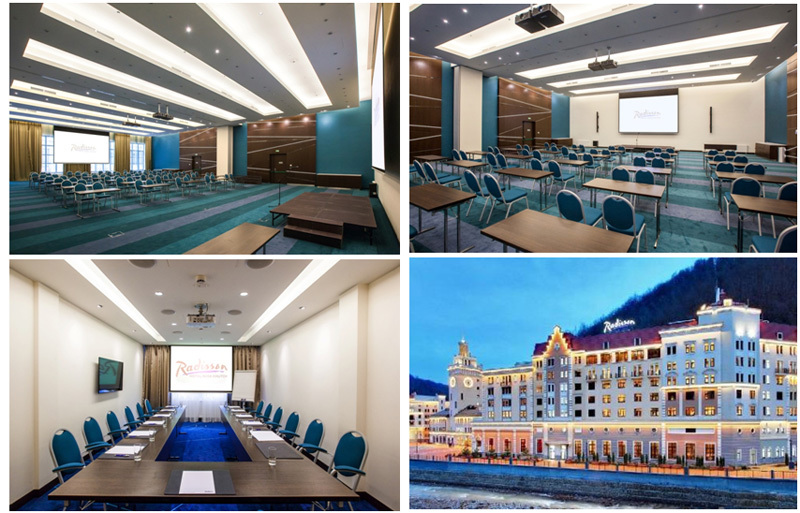
Radisson is one of the hotels in the group at Rosa Khutor in Sochi
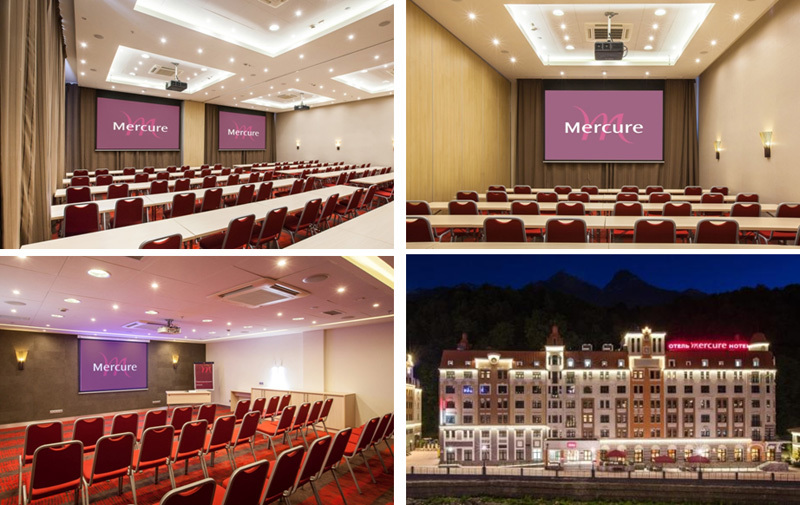
Mercury
In the meeting rooms of hotels ranging from 30 to 340 square meters. m held as a meeting with the number of participants up to 20 people, and large-scale conferences and banquets. In Redisson is a large hall, if necessary, it can be divided into two parts using a mobile soundproofing wall. Projectors are integrated by stacking technology. The sound-insulating wall, similar to the one that was installed in the Moscow hall of the Radisson Hotel, is also used in the conference rooms of St. Moritz and Chamonix at the Mercure hotel, as well as in the conference hall of the Golden Tulip Rosa Khutor hotel.
In all rooms, sound and video from projectors are adjusted using the touch panel on the iPad. The control system allows you to automatically switch the modes of operation of the halls, depending on their configuration. The sensors track the position of the mobile partition, and the central processor, which receives the signal, rearranges the work of audio and video equipment.
Golden Tulip Rosa Khutor uses universal mobile multimedia equipment kits designed to save space in a hotel. These racks can be connected to specialized modules in any room of the hotel and can thus turn it into a functional conference room.
Here was another interesting case. To save and improve the reliability of the system, we sometimes put a solution of two projectors on one screen. There is a possibility of pixel-by-pixel matching, this is not a problem. And the benefit is that projectors can cost $ 3,000 each, while high power is twice as much - 10 thousand. Plus, if one crashes, the second will remain. Savings and reservations.
So we set up such a system in Sochi. A month later, they complained that the picture "floats" a little. Sent an engineer, he brought back. A month later - again. We began to dig, began to look, when the dates were out of sync. It turned out that these days there were small earthquakes that were not even felt. And the projectors were on independent rods. Fixed to each other - the picture has not changed. After a while there was an installation in the same office in the region - there was a table jumping at all when a tram was passing, they remembered.
Another rake
Here, the standard for the hotel spelled the brightness of 3 thousand lumens per projector. The one who wrote this apparently thought that all the rooms are standard. The reflected brightness should be higher than the illuminance a certain number of times. If the lighting is 250 lux, you need, for example, 700 lux of reflection. The hall is large, the screen is 4 meters by 3 meters, that is 12 meters of area. 3,000 lumens from a projector is plus or minus 250 lux of reflection under normal conditions. That is, the brightness ideally corresponds to the illumination of the room - black and white do not differ. They worked in this room only with the lights turned off ... Until the conference began, where people wrote in notebooks, they had to increase the brightness of the projector, to do a spotlight.
The second case - the type of screen is not registered in the standard. A big screen is bought, and the projector remains old, from the previous hall. We were lucky in that room - the hotel’s clients came, looked around, said “change the projector or not do it at all”. Changed. But you could be silent - then for half a year the hotel would not know why customers are not going.
Often do not provide a screen for a speaker or a presidium. As a result, five people sit in front of the hall and wildly turn their heads back. Either the backup monitor stands at the bottom, and nobody ever sees a speaker with eyes in the hall.
Often it is necessary to struggle with the feedback effect: they put omnidirectional microphones on the presidium table - and hung up the ceiling acoustics, while the microphones, of course, begin to “wind up”.
It often happens that you have to stupidly replace the matrix switcher, because you put 4x4 without a stock, and you need two more inputs and outputs. The difference in price scared at first, and when it took something to connect the "blood from the nose" - the old piece of iron has nowhere to go.
In one small hotel I saw how the builders assembled everything on their own, but for some reason nobody told them that the cable had to go to the projector.
In a large, solid hall, I saw how incorrectly placed the hatches in the floor for sockets and charging - a round table, and two snot from the wall - power supply 220V and HDMI stretched to it.
I saw bets only on the wireless network, when any chance drops the whole event.
The most probably scary thing was the motorized screen, which was leaving the ceiling. So, the architect did not agree with the engineer of the engineer somewhere, and this screen closed the entrance door. Someone was late - the speaker stops, raises the screen, lets in. Someone wanted to use the toilet - the same procedure.
PS I am pleased to answer questions in the comments or, if they concern specific projects, by mail to PPochtennov@croc.ru.
Source: https://habr.com/ru/post/245335/
All Articles